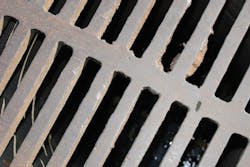Fatberg Epidemic Affecting New York City
In New York City, the cost of removing fatberg debris has more than doubled since 2007, according to Edward Timbers, the director of communications for the city’s Department of Environmental Protection. Products such as flushable wipes and bacon grease are seemingly to blame.
Left on their own, fatbergs can cause untreated water to flow into local waterways, or they can even backup of sewer water into homes, a public health issue. According to Timbers, cleaning screens and repairing damage from “baby fatbergs” and their kin currently costs the city about $20 million annually.
According to Slate, they’ve been in Charleston, Baltimore and London, just to name a few. A fatberg was found beneath a small town southwest of London, which was alarming considering the small amount of people doing the flushing.
New York City has recently undertaken a campaign describing the fatbergs on fatbergfree.nyc as “huge, disgusting, destructive and costly”, alongside a cartoon illustration of a pile of grease, cotton swabs and sanitary pads. According to Slate, recently deployed posters in subways feature the cartoon fatberg, along with giant, children’s-book style illustrations of where to dump bacon grease, tampons, and wipes instead of the drain.
Timbers says alongside grease, the main concern is wet wipes. In 2017, New York City “took 53,269 tons of debris (mostly wipes) off of our treatment plant screens and transported them to landfill,” Timber said in an email.
However, products like toilet paper sprays and gels have been developed to address the desire to have something wet to wipe with and are a more environmentally friendly alternative.
